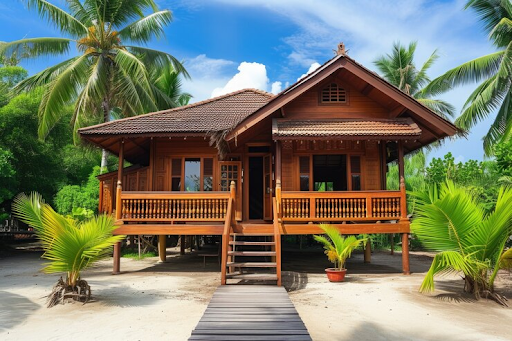Building a new home right at the beach has always been a dream of many as it enables one to have a magnificent view of the area. Nevertheless, working in the coastal environment has its characteristics that one has to take into consideration with help of the professionals.
When building a new beachfront home, it is wise to learn several key aspects including erosion control, material selection, and construction. Read on to learn the most important factors to consider and tips about constructing a house on the beachfront.
1. Planning and Site Selection
Selecting the right site for a new house construction is very essential. Areas near the coast experience erosion, flooding, and storm surges, therefore deciding on a site with natural buffers or high ground would help to reduce the impact of these effects. It is always helpful to seek advice from people who are well conversant with construction processes especially those relating to coastal homes.
2. Robust Foundation and Structural Integrity
Every sturdy house is built on a strong base and this is especially important when it comes to construction close to the sea. Recommended construction materials and techniques include the use of reinforced concrete and deep pilings to counteract the effects of the shifting sand and high-velocity winds. Professional Custom seawall builders can also add to the improvement of the erosion and storm protection of your house and make it safe for decades.
3. Material Selection for Coastal Conditions
The choice of materials you use in your beachfront home can greatly determine its ability to withstand strong winds and other weather conditions. Choose durable and non-corrodible materials like stainless steel, treated lumber, and fiber cement siding. These materials are intended to withstand the storms in the coastal areas as well as salty air and humidity. These materials can, however, be made to last longer through maintenance and the application of protective coatings.
4. Energy Efficiency and Sustainability
The choice of materials you use in your beachfront home can greatly determine its ability to withstand strong winds and other weather conditions. Choose durable and non-corrodible materials like stainless steel, treated lumber, and fiber cement siding. These materials are intended to withstand the storms in the coastal areas as well as salty air and humidity. These materials can, however, be made to last longer through maintenance and the application of protective coatings.
5. Landscaping and Erosion Control
A landscape design contributes significantly to the prevention of beachfront property from getting eroded and being destroyed by storms. It is necessary to observe the use of native plant and grass species to limit the erosion of the soil, with barriers like retaining walls or dunes, constructed at regular intervals. Consulting with professionals who can come up with ideal designs for coastal landscaping helps to create beautiful landscapes while also protecting the property.
Conclusion
A landscape design contributes significantly to the prevention of beachfront property from getting eroded and being destroyed by storms. It is necessary to observe the use of native plant and grass species to limit the erosion of the soil, with barriers like retaining walls or dunes, constructed at regular intervals. Consulting with professionals who can come up with ideal designs for coastal landscaping helps to create beautiful landscapes while also protecting the property.




